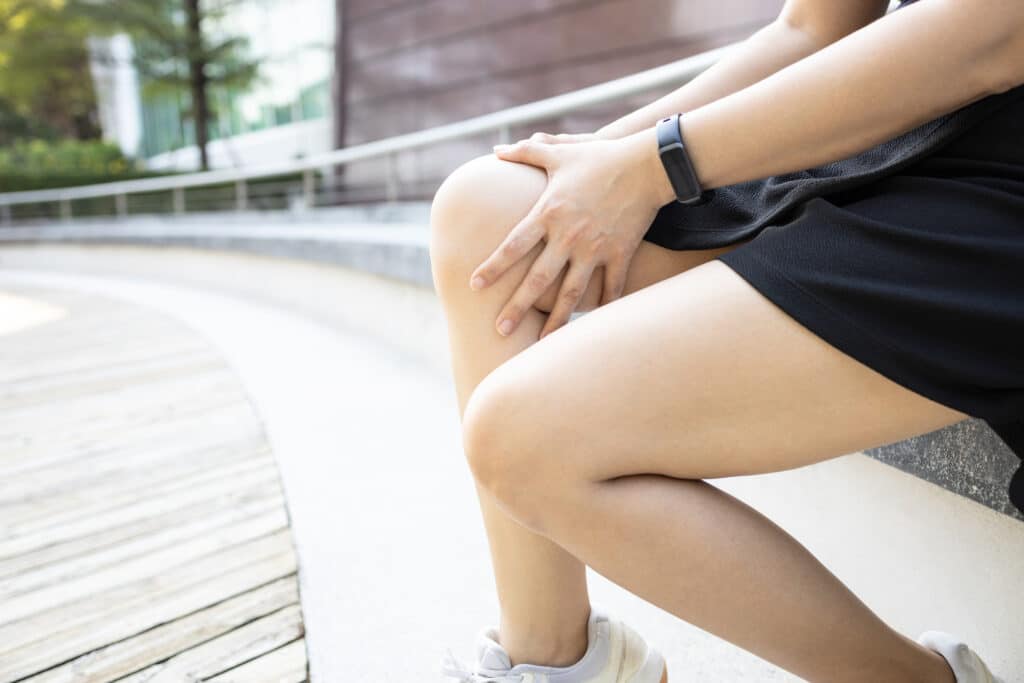
Runner’s knee, also known as patellofemoral pain syndrome (PFPS), is a common condition that affects many athletes, particularly those who engage in high-impact activities like running. Characterized by pain around or behind the kneecap, this condition can significantly hinder performance and daily activities. While traditional treatments such as rest, ice, and medication are often recommended, an osteopathic approach can provide a comprehensive and effective solution. This article will explore how osteopaths help with runner’s knee and how CARESPACE’s coordinated care model can enhance treatment outcomes.
Understanding Runner’s Knee
Runner’s knee typically manifests as a dull, aching pain around the front of the knee, often exacerbated by activities such as running, climbing stairs, squatting, or sitting for prolonged periods. The pain is usually due to overuse, misalignment, or trauma, which leads to irritation of the soft tissues or the lining of the knee. Factors contributing to runner’s knee include muscle imbalances, poor foot biomechanics, improper training techniques, and inadequate stretching or warm-up routines.
The Role of Osteopathy in Treating Runner’s Knee
Osteopathy is a holistic approach to healthcare that focuses on diagnosing, treating, and preventing health issues by ensuring the body’s musculoskeletal system is functioning optimally. Osteopaths use a range of hands-on techniques to improve mobility, relieve pain, and enhance overall health. Here’s how osteopaths can specifically help with runner’s knee:
Assessment and Diagnosis:
Osteopaths begin with a thorough assessment to identify the root cause of the knee pain. This includes evaluating the client’s posture, gait, and overall biomechanics. By understanding how different parts of the body interact and affect each other, osteopaths can pinpoint imbalances or dysfunctions contributing to runner’s knee.
Manual Treatment:
Osteopaths employ various manual therapy techniques, such as soft tissue massage, joint mobilization, and myofascial release, to alleviate pain and improve knee function. These techniques help reduce inflammation, enhance blood flow, and promote healing of the affected tissues.
Correcting Biomechanical Issues:
Poor biomechanics, such as overpronation or supination of the feet, can lead to improper loading of the knee joint and contribute to runner’s knee. Osteopaths address these issues by recommending orthotic devices, adjusting footwear, and providing exercises to correct foot and leg alignment.
Strengthening and Conditioning:
Weakness or imbalance in the muscles surrounding the knee, such as the quadriceps, hamstrings, and hip muscles, can exacerbate runner’s knee. Osteopaths design personalized exercise programs to strengthen these muscles, improve flexibility, and enhance overall stability and coordination.
Education and Prevention:
Education is a crucial component of osteopathic care. Osteopaths teach clients about proper training techniques, the importance of warm-ups and cool-downs, and strategies to prevent recurrence. This empowers clients to take an active role in their recovery and long-term health.
Coordinated Care at CARESPACE
At CARESPACE Health+Wellness, we understand that effective treatment often requires a multidisciplinary approach. Runner’s knee is a condition that benefits greatly from coordinated care involving various healthcare practitioners. Here’s how our approach can help:
Multidisciplinary Team:
Our team includes osteopaths, physiotherapists, chiropractors, kinesiologists, dietitians, fitness trainers, and psychotherapists. This diverse expertise allows us to create a comprehensive treatment plan tailored to each client’s needs.
Collaborative Treatment Plans:
By working together, our practitioners can address all aspects of runner’s knee. For example, an osteopath might focus on manual therapy and biomechanics, while a physiotherapist provides targeted exercises, and a dietitian offers nutritional advice to support healing and performance.
Holistic Approach:
We take a holistic approach to healthcare, recognizing that the mind and body are interconnected. Our psychotherapists can help manage the mental and emotional aspects of dealing with chronic pain or injury, ensuring a well-rounded recovery process.
Personalized Care:
Each client receives a personalized care plan based on their specific condition, goals, and preferences. This ensures that all aspects of their health are considered, leading to more effective and sustainable outcomes.
Ongoing Support:
Recovery doesn’t end with the resolution of symptoms. We provide ongoing support and follow-up care to ensure that clients maintain their progress and prevent future issues. This includes regular check-ins, adjustments to the treatment plan, and access to resources and education.
Runner’s knee can be a debilitating condition, but with the right approach, it is manageable. Osteopaths play a crucial role in diagnosing and treating runner’s knee by addressing the underlying causes and promoting optimal musculoskeletal function. At CARESPACE Health+Wellness, our coordinated care model ensures that clients receive comprehensive and personalized treatment from a multidisciplinary team of experts. This collaborative approach not only addresses the immediate issue but also supports long-term health and wellness. If you’re struggling with runner’s knee or any other condition, consider exploring the benefits of osteopathy and coordinated care to get back on track and achieve your health goals.

